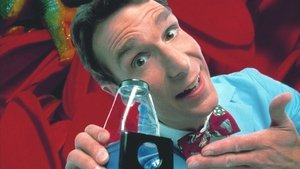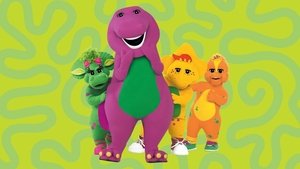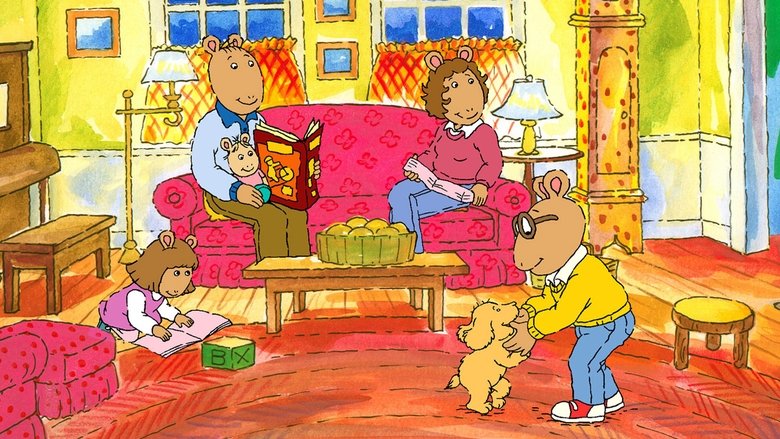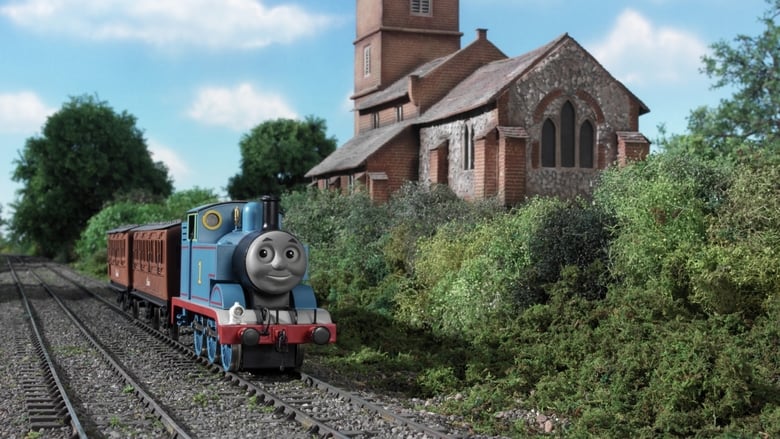Classic pbs kids shows you watched in the 90s
Step back in time to the golden age of educational television. If you grew up in the 1990s, these classic PBS shows were likely a staple of your childhood mornings and afternoons.



For many, PBS wasn't just a channel; it was an integral part of growing up, offering a unique blend of entertainment and education that shaped young minds. In an era before widespread internet and streaming, shows like Sesame Street laid foundational learning, while Reading Rainbow ignited a love for books. Series such as Bill Nye the Science Guy made complex subjects accessible and exciting, proving that learning could be incredibly fun. Other programs like Arthur and Wishbone explored social skills, empathy, and the world through imaginative storytelling. These shows weren't afraid to tackle important themes, from diversity and friendship to problem-solving and curiosity, leaving a lasting legacy on a generation.
14. Clifford the Big Red Dog (2000)
Life is always interesting when your best friend is a giant red dog! Clifford the Big Red Dog, based on the beloved book series by Norman Bridwell, tells the stories of Emily Elizabeth and her oversized canine companion, Clifford. Living on Birdwell Island, Clifford's enormous size often leads to comical situations, but the core of the show lies in the simple, heartfelt lessons about kindness, responsibility, and friendship. Each episode typically featured two stories, often highlighting a positive value. The show successfully translated the gentle charm of the books into a sweet and wholesome animated series for young children.

13. Caillou (1998)
Based on the books by Christine L'Heureux, Caillou follows the everyday experiences of a four-year-old boy. The show is known for its simple, slice-of-life narratives, focusing on Caillou learning about the world around him and dealing with typical preschooler issues like visiting the doctor or going to the park. The animation style is distinctively simple, reflecting the perspective of a young child. While sometimes criticized for its protagonist's behavior, the show aimed to portray realistic childhood scenarios and emotions, often framed by a grandmother's narration, providing a gentle and relatable look at growing up.

12. Dragon Tales (1999)
Enter a world of friendly dragons and magical adventures with Dragon Tales. This animated series followed the adventures of siblings Max and Emmy who, by holding a magical dragon scale, could travel to Dragon Land. There, they befriended dragons Cassie, Ord, Zak, and Wheezie. The show focused on teaching social skills, such as dealing with fear, sharing, and perseverance, through the siblings' interactions with their dragon friends. The colorful animation and gentle storylines made it appealing to preschoolers, offering a mix of fantasy and lessons about navigating childhood emotions and challenges.

11. Teletubbies (1997)
Coming from the UK, Teletubbies introduced the world to Tinky Winky, Dipsy, Laa-Laa, and Po. This highly stylized show was specifically designed for very young children, using simple language, repetition, and bright visuals. Set in a grassy, surreal landscape, the Teletubbies engaged in simple activities and watched real-life children on screens embedded in their bellies. While it sometimes sparked debate among parents and critics, its focus on early learning concepts like shapes, colors, and simple interactions resonated with babies and toddlers. The iconic sun baby is one of its most enduring images.

10. Arthur (1996)
Based on the popular book series, Arthur quickly became a staple of PBS Kids. The show follows the life of Arthur Read, an eight-year-old aardvark, and his friends and family as they navigate everyday childhood issues. Known for its relatable stories about homework, friendships, and dealing with siblings, Arthur grounded its narratives in realistic scenarios that kids could understand. The show often tackled slightly more complex topics than other preschool shows, making it suitable for slightly older children. Its theme song, "Believe in Yourself," performed by Ziggy Marley and the Melody Makers, is instantly recognizable and encapsulates the show's positive message.

9. Theodore Tugboat (1993)
Set in the Big Harbour, Theodore Tugboat followed the adventures of a small, friendly tugboat learning about the world and making friends. The show, produced in Halifax, Nova Scotia, used models and simple animation to tell its stories. Theodore was often the newcomer or the one learning a lesson, making him a relatable character for young viewers. The series quietly taught lessons about cooperation, trying your best, and respecting others through the interactions between Theodore and the other boats and characters in the harbour. It had a gentle pace and a focus on positive social interactions.
8. Thomas & Friends (1984)
Everyone's favorite blue tank engine chugged along on PBS, bringing the world of Sodor to life. Thomas & Friends, based on the books by Rev. W. Awdry, follows Thomas and his railway friends learning lessons about friendship, responsibility, and problem-solving. The show's distinctive look, using live-action models and later CGI, gave it a unique charm. Ringo Starr and George Carlin were among the early narrators for the US version, adding a touch of star power. The simple, character-driven stories resonated with young viewers, teaching gentle lessons through the daily adventures on the railway.

7. The Puzzle Place (1995)
Focusing on diversity, understanding, and problem-solving, The Puzzle Place featured a group of puppets from different ethnic backgrounds and cultures. The show aimed to teach children about acceptance, cooperation, and navigating social situations. Each episode presented a challenge or conflict that the friends had to work through together, emphasizing communication and empathy. The puppets were created by Jim Henson Productions, bringing a high level of artistry to the characters. While perhaps not as widely remembered as some contemporaries, its dedication to representing different perspectives and promoting positive social values was commendable and relevant.

6. Wishbone (1995)
What if a dog could step into the shoes of classic literary characters? That's the ingenious premise of Wishbone. This live-action show featured a Jack Russell terrier named Wishbone who, in his daydreams, would imagine himself as the lead character in famous stories from literature. From the adventures of Tom Sawyer to the myths of Hercules, the show introduced viewers to timeless tales in a fun and accessible way. The segments featuring the real-life Wishbone (played by the talented dog Soccer) were interspersed with high-quality costume drama adaptations of the stories, making classic literature approachable and exciting for a young audience. It was a truly unique blend of education and entertainment.

5. Barney & Friends (1992)
The big purple dinosaur brought singing, dancing, and positive messages to the screen with Barney & Friends. While sometimes polarizing for adults, the show was a massive hit with its target preschool audience, focusing on social skills, sharing, and imagination through simple songs and stories. Barney's gentle nature and emphasis on love and kindness resonated deeply with very young children. The show famously featured many young actors who would later become stars, including Selena Gomez and Demi Lovato. Despite criticisms, its focus on positive reinforcement and simple educational concepts made it a staple in many homes with toddlers and preschoolers.

4. Bill Nye the Science Guy (1993)
Science rules! Bill Nye brought a level of infectious energy and enthusiasm to explaining scientific principles that was simply unmatched. Bill Nye the Science Guy used fast-paced segments, witty humor, and engaging experiments to make learning science cool. With his signature lab coat and bow tie, Nye tackled topics ranging from gravity and electricity to ecosystems and the human body. The show's blend of education and entertainment, often featuring music video parodies and comedic sketches, made it a massive hit with kids and adults alike. Produced in Seattle, the show became a pop culture phenomenon, proving that understanding the world around us could be incredibly entertaining.

3. The Magic School Bus (1994)
Hop on the big yellow bus with Ms. Frizzle and her class! The Magic School Bus made learning science an incredibly fun and imaginative journey. Based on the popular book series, the animated show follows an eccentric teacher who takes her students on incredible field trips aboard a magical bus that can transform into anything. From exploring the human body from the inside out to shrinking down to the size of an ant, the show tackled complex scientific concepts in an accessible and entertaining way. Lily Tomlin originally voiced Ms. Frizzle, bringing a unique blend of kookiness and wisdom to the character. It wasn't just about facts; it was about fostering curiosity and showing kids that science is everywhere and can be exciting.

2. Reading Rainbow (1983)
Take a look, it's in a book! Reading Rainbow was an absolute treasure for young readers, hosted by the effortlessly cool LeVar Burton. For over 20 years, this show ignited a passion for reading by exploring specific children's books through engaging segments. Each episode felt like a mini-adventure, taking viewers on field trips related to the book's theme and featuring kid reviewers sharing their thoughts. It wasn't just about reading the words; it was about experiencing the stories and understanding the world they opened up. The show won countless awards, including 26 Emmy Awards, a testament to its quality and impact on promoting literacy. LeVar Burton's warm and inviting presence made exploring literature feel accessible and exciting for countless children.

1. Sesame Street (1969)
Stepping onto the street where everyone is welcome, Sesame Street is a true cornerstone of children's television. Since 1969, this pioneering show has brilliantly blended live-action, animation, puppetry, and humor to teach preschoolers everything from letters and numbers to social-emotional skills and cultural understanding. The brainchild of Joan Ganz Cooney and Lloyd Morrisett, it was revolutionary in using television as an educational tool, specifically targeting disadvantaged children. Did you know the show's setting, a fictional New York City street, was designed to feel familiar and relatable? Its impact is immeasurable, shaping generations of young minds and introducing iconic characters like Big Bird, Elmo, and Oscar the Grouch who are recognized and loved worldwide. It's more than just a show; it's a cultural institution that keeps evolving while staying true to its core mission of educating and entertaining.

